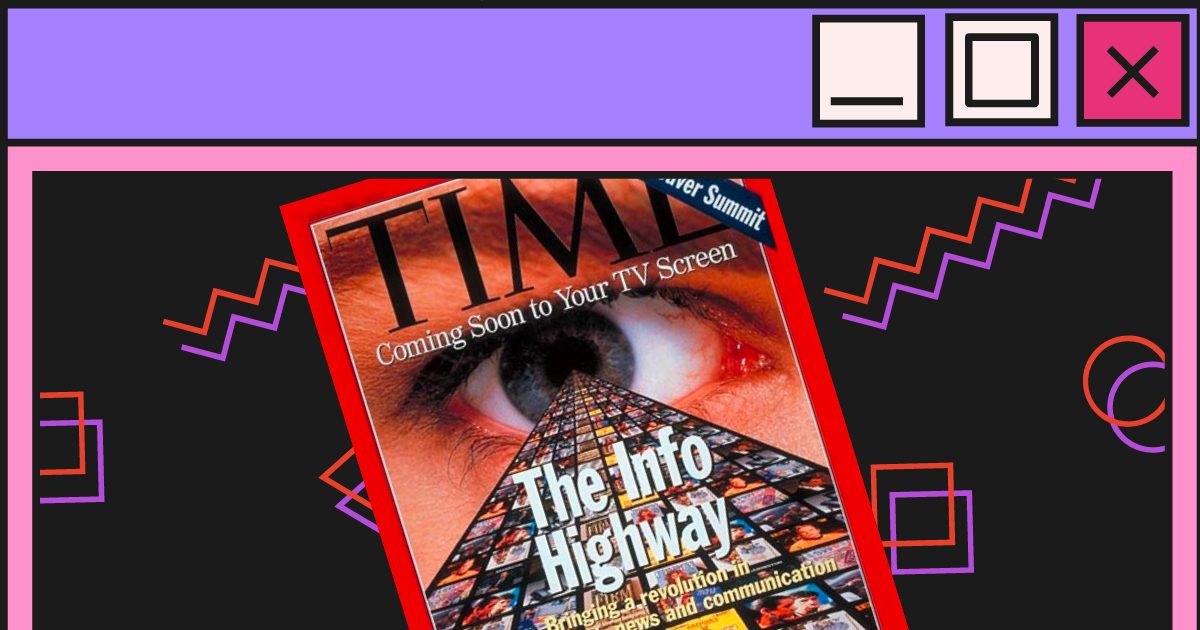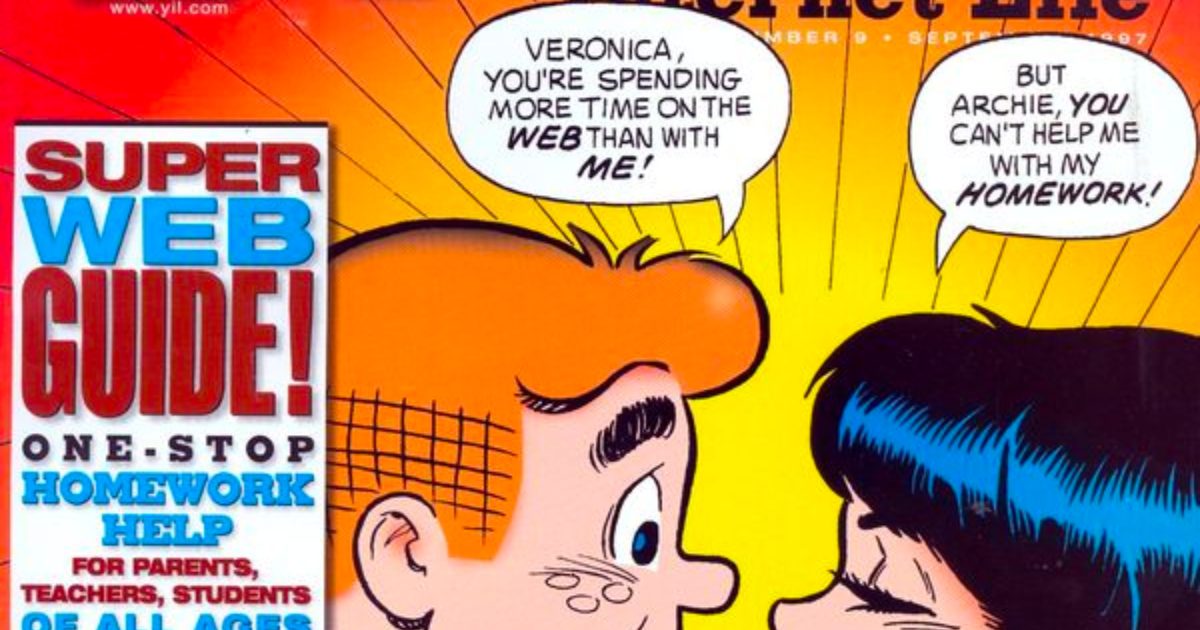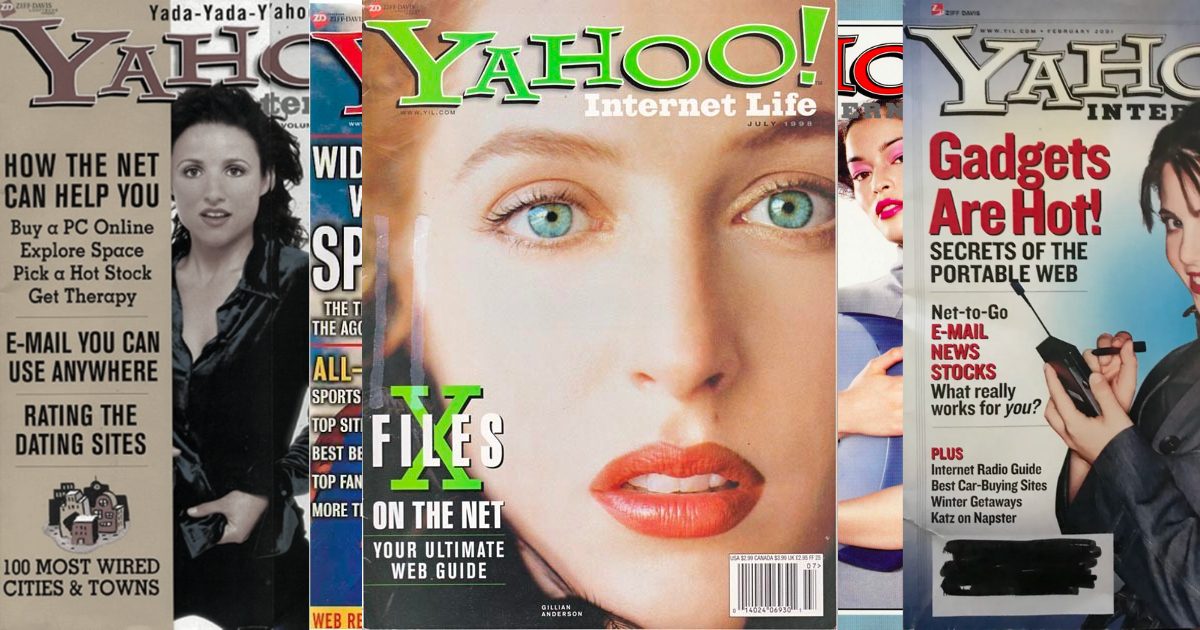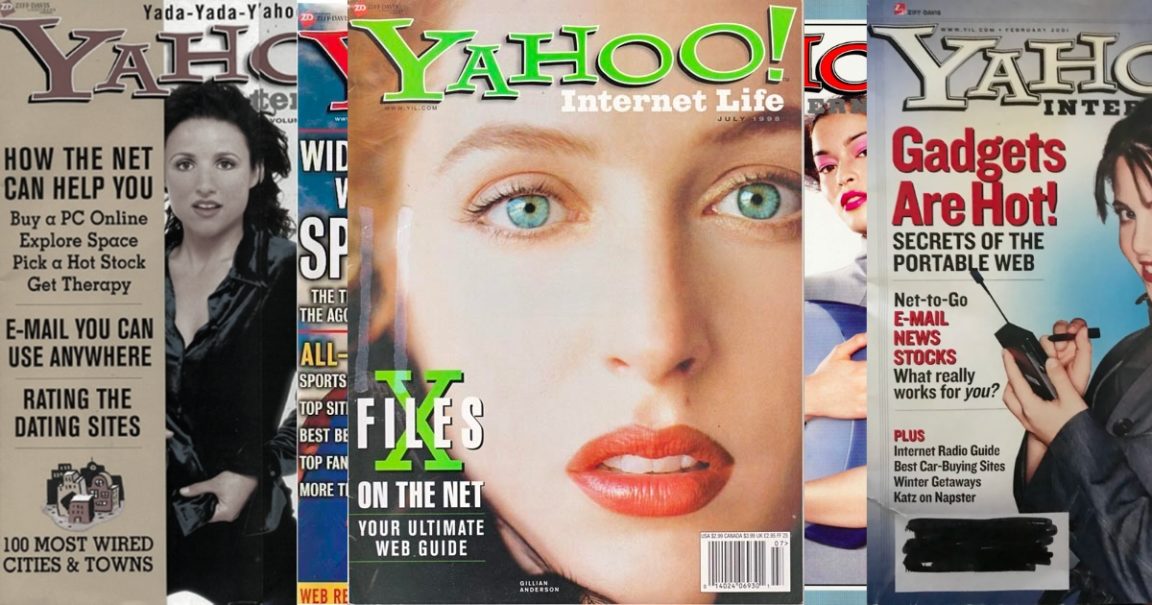So the internet has taken the world by storm and transformed the entertainment and marketing industry. The whole world has changed in more ways than one. But has it really? Magazines still print and sell in good numbers. Standard television programs run alongside streaming giants. How much has the digital and media landscape actually changed, and is it really as all-encompassing as many of us might think? And inside that landscape, that giant question of what has changed and by how much?
What even is Yahoo! Internet Life? How does a magazine about the internet fit into its historic climate and what place does this absurd seeming magazine have in the modern world? Here we’re going to take a look into two big questions, the place of traditional marketing in the world both then and today, and the place of the Yahoo! Internet Life magazine in all of that.
What is Yahoo! Internet Life?
Yahoo! Internet Life was a magazine published between 1996 and 2002 that focused on the internet, everything to do with the internet, and new technologies presented in a traditional print magazine. It offered a variety of articles on new developments in the tech world, discussions on controversial issues (such as online pornography and online piracy), and regularly featured product reviews on both technology and web pages alike. Alongside this, it offered pages that were basically just advertisements, and a regular column for film critic Robert Ebert to talk about the latest film and tv releases.
Sounds great right? Just another magazine about the latest technology for the people. Except… It was printed media for what was essentially an online market and community. The 1990s and early 2000s were the decades of internet forums and online community groups. Everything from review websites to conversations with the experts themselves was already available online, and one might logically expect that the market for this magazine would already have access to this information online.
Why did Yahoo! Internet Life even exist?
A Case Study: Online Media vs Traditional Media

Now, of course, an easy answer might be to say well, it was the 90s. The internet hadn’t yet taken over the media landscape and traditional advertising was still a hotly contested and viable option. A magazine like Yahoo! Internet Magazine filled a specific niche, it brought knowledge and attention to anyone who wasn’t a prolific internet user, and at the same time it was a medium of disseminating information that everyone was useful. Naturally, once everyone started moving online, the magazine died down and eventually stopped being profitable. And you’d be right! Except it’s not as straightforward as you’d think.
Ask yourself, what was the most popular and profitable ongoing TV show in America in 2022? Well, if you answered anything other than Yellowstone, you’d be dead wrong. Yellowstone peaked at around 13.1 million viewers per episode. In second place? NCIS Hawaii with 12.2 million viewers. By comparison, Netflix often boasted numbers for their TV series at around 60 million, but that was over a period of one month, not for one day. Additionally, due to Netflix’s binge-watch culture, that also usually represented the entire outreach of the series often viewed in full over the course of a few days. But hey, Netflix has more views, right? So it’s doing better! Well…
…Think about it. From a marketing and advertising perspective which of the two do you think made more money? An entire season of The Witcher on Netflix at 76 million views with no additional advertising binge-watched within a week? Or Yellowstone, viewed over the course of roughly 5 months with advertising revenue coming in, again and again, several times per episode. Not only that but which demographic do you think the shows were targeting? The young millennial and Gen Z crowds with limited funds, or the older boomer generation with luxury time and disposable incomes?
Due to matters of privacy, unreleased figures, and just general differences in their business models, it’s hard to directly compare many elements of Netflix and other streaming services with the revenue streams of a traditional television show, but we do know that Yellowstone was regarded as the most profitable TV franchise in the world in 2021 having made over $100 million in sales alone. Not advertising, sales, all of which went right back to the studio that made the show. By comparison, the Witcher video game franchise saw profits of around $48 million – none of which were profits seen by Netflix.
Perhaps one more comparison should be made between the older generation of TV vs the new generation of Netflix. For his role in Yellowstone, Kevin Costner reportedly began the series with an income of $500k per episode and now receives $1.2 million per episode. Henry Cavil for the first season of The Witcher? $400k, a number that will not be going any higher now that he has left the show. Although a direct comparison of actor’s wages has its limits, the fact that a TV show on traditional television believed they could easily afford to pay their actors wages that rivalled or greatly surpassed anything seen on Netflix – and continues to do so in the 2020s – speaks volumes about the overall health of the more traditional industry as a whole.
Bringing it Back to Yahoo! Internet Life



Think about how those numbers impact media and advertising. Obviously, if traditional media can still be not only a success but even more popular than digital media, then how much has the world really changed? Well, it’s changed a lot, but more specifically what it has changed is the demographics.
Despite the overwhelming popularity of Yellowstone, the average viewer of Yellowstone is over 40 years old with a much greater number over 50 than under 30. This is the same demographic for traditional magazines, radio, and physical newspapers. Meanwhile, the average user of Netflix is in their 20s or 30s, typically the same demographic as the YouTube generation. In short, online media and traditional media like magazines are targeting very different user bases, which is why so many forms of print media are still around today.
The Death of Yahoo! Internet Life
So, why then did Yahoo! Internet Life end in 2002? The simple answer? Because the target audience of Yahoo! Internet Life was the same audience that moved onto the internet. For a brief time, Yahoo! Internet Life was at the forefront of technology and Internet culture, presented in the media of the day. But once the people who consumed that media moved onto the internet, Yahoo! Internet Life lost its audience. It couldn’t tap into the older generation who weren’t interested in the new magazine and changing times, and with each new generation interest in magazines of any kind dwindled.
Yahoo! Internet Life didn’t die because magazine readership was dying. It died because it tapped into the exact demographic of magazine readership that was already leaving – and through its articles actively hastened that exodus.
It’s hard to know whether the writers and editors realised this when they began, but today we can see that despite the incredible resilience and ongoing popularity of traditional media, there probably is not, and never will be, another place for a print magazine like Yahoo! Internet Life in the future.





